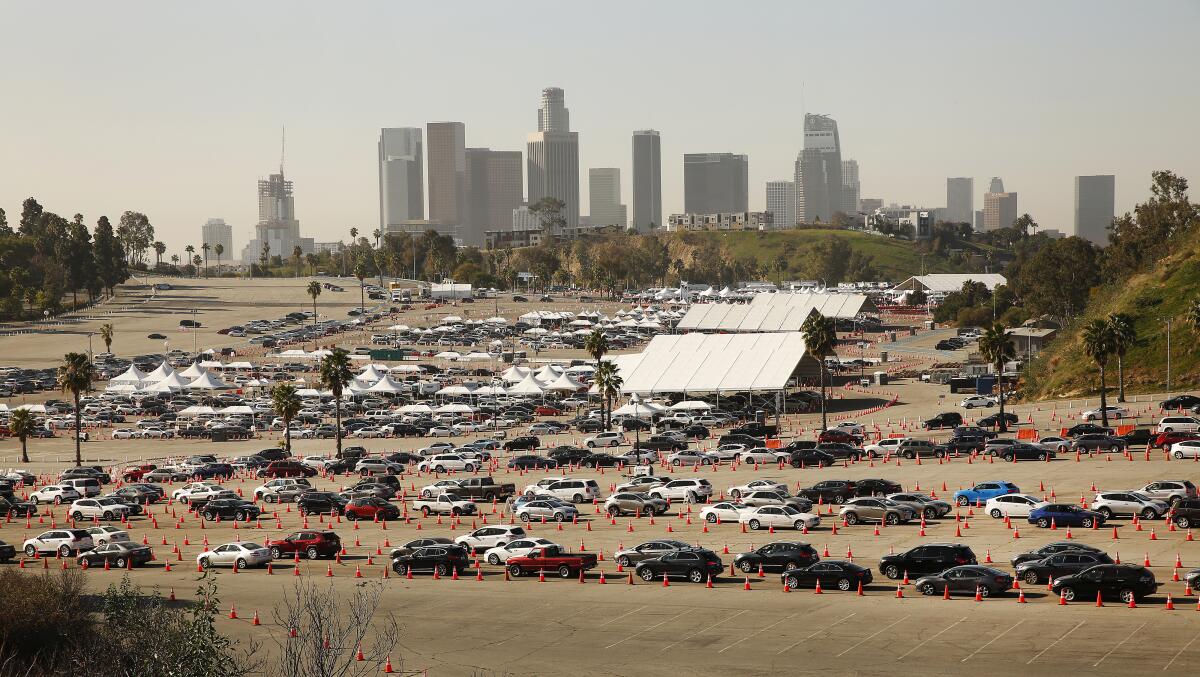Letters to the Editor: We’ve provided a breeding ground for virus mutations with repeated reopenings

To the editor: The appearance of virus variants is not some inevitable misfortune. It was quite foreseeable. As Dr. Anthony Fauci has said, the virus can only mutate if it replicates. (“California’s coronavirus strain looks increasingly dangerous: ‘The devil is already here.’”)
Our nation’s approach to the pandemic has been what I call the “thermostat policy.” If the rates of hospitalization and death are increasing, we lock down. If the rates are going then, we open up. This is the way a thermostat works, and its function is to keep things warm.
We don’t want to keep the virus warm. We don’t want the death rate to keep a happy medium. What we’ve done is provide the coronavirus ample opportunities to replicate, so now there are multiple new variants, some of which are more infectious and more deadly that previous ones.
To get rid of a virus, which we did successfully with smallpox, it is necessary to lock down ruthlessly and completely for a period as long a typical infection, and then be prepared to vaccinate and isolate around any outbreak anywhere in the world. This will have to be done for each new variant that may be resistant to vaccines.
Fortunately, decades of advances in molecular biology now give us the ability to design a new vaccines in weeks, but the time it takes to test, produce and distribute doses is still many months, so it will not be easy to get ahead of this virus. But, relaxing lockdowns every time things cool off just makes the situation worse.
Brent Meeker, Camarillo
..
To the editor: To date, SARS-CoV-2 variants have become more transmissible, more lethal and, possibly, less vulnerable to the immune response stimulated by vaccination. At this rate of evolution, it is but a matter of time until virus variants develop that have these characteristics and are more deadly to people under 50 years old.
The daily average of 70,000 new cases in the United States, a number that as recently as last July precipitated lockdowns, provides ample room for the virus to mutate and recombine into ever more dangerous variants.
We find ourselves in a lull while the next wave of ever more dangerous virus approaches.
Mark Tracy, M.D., Carlsbad
..
To the editor: The article on California’s strain is unbalanced, thus misleading. Its alarmist tone grabs attention at the expense of informing responsibly.
As stated, the new strain accounted “for more than 50% of all coronavirus samples that were subjected to genetic analysis in the state” since September. It may well have contributed to the fall and winter surge.
But now that surge is done, with the rate of virus replication in Los Angeles County and Orange County at around 0.6 new cases for each person infected, which indicates the spread is slowing rapidly. The same is true in other parts of the state.
In other words, the pandemic is fading in California despite the presence of the new strain since September.
Quoting levels of neutralizing antibodies failing against the virus in a test tube, without explaining the role of T-cells in immunity, and disregarding the exceedingly low numbers of reinfections with the new strain in the millions who have been infected, are further examples of this article’s incompleteness.
The empirical evidence speaks for itself. Despite new variants circulating for months, cases and transmission rates are plummeting, as immunity from vaccines and previous infections take hold.
Michael Brant-Zawadzki, M.D., Newport Beach
..
To the editor: Apparently, the glass is half empty at The Times. Your article is not doing Los Angeles any favors by stirring up fear with an absolutely worst-case scenario report, including a quote from a researcher who said, “The devil is already here.”
Digging just a little deeper indicates the vaccines are only moderately less effective against the California variant, and their efficacy has not yet been quantified. That does not sound like total doom to me.
Esquire magazine specifically cited The Times’ report in its piece, “We Need to Prepare for the Possibility That Something Good Might Happen.”
William Goldman, Palos Verdes Estates
More to Read
A cure for the common opinion
Get thought-provoking perspectives with our weekly newsletter.
You may occasionally receive promotional content from the Los Angeles Times.










